Carl Zeiss Touit Planar T* 32mm F/1.8
Standard prime lens • Digital era
Abbreviations
| T* | Multi-layer anti-reflection coating is applied to the surfaces of lens elements. This anti-reflection coating increases light transmission, eliminates flare and ghosting, and maintains color consistence among all lens models. |
Sample photos
Features highlight



Specification
| Production details: | |
| Announced: | September 2013 |
| Production status: | ● In production |
| Original name: | Carl Zeiss Planar 1.8/32 T* |
| System: | - |
| Optical design: | |
| Focal length: | 32mm |
| Speed: | F/1.8 |
| Maximum format: | APS-C |
| Mount and Flange focal distance: | Fujifilm X [17.7mm] |
| Sony E [18mm] | |
| Diagonal angle of view: | 47.9° (Fujifilm X APS-C) |
| 47.7° (Sony NEX/a/ZV APS-C) | |
| Lens construction: | 8 elements in 5 groups |
| On Fujifilm X APS-C [1.52x] cameras: | |
| 35mm equivalent focal length: | 48.6mm (in terms of field of view) |
| 35mm equivalent speed: | F/2.7 (in terms of depth of field) |
| On Sony NEX/a/ZV APS-C [1.53x] cameras: | |
| 35mm equivalent focal length: | 49mm (in terms of field of view) |
| 35mm equivalent speed: | F/2.8 (in terms of depth of field) |
| Diaphragm mechanism: | |
| Diaphragm type: | Automatic |
| Aperture control: | Aperture ring (Manual settings + Auto Exposure setting) (Fujifilm X) |
| None; the aperture is controlled from the camera (Sony E) | |
| Number of blades: | 9 (nine) |
| Focusing: | |
| Closest focusing distance: | 0.37m |
| Magnification ratio: | 1:9 at the closest focusing distance |
| Focusing modes: | Autofocus, manual focus |
| Autofocus motor: | Micromotor |
| Manual focus control: | Focusing ring |
| Focus mode selector: | None; focusing mode is set from the camera |
| Manual focus override in autofocus mode: | Determined by the camera |
| Optical Image Stabilizer (OIS): | |
| Built-in OIS: | - |
| Physical characteristics: | |
| Weight: | 210g (Fujifilm X) |
| 200g (Sony E) | |
| Maximum diameter x Length: | ⌀65×58mm (Fujifilm X) |
| ⌀65×60mm (Sony E) | |
| Weather sealing: | - |
| Fluorine coating: | - |
| Accessories: | |
| Filters: | Screw-type 52mm |
| Lens hood: | 2049-551 - Bayonet-type round |
| Teleconverters: | Not available |
| Sources of data: | |
| 1. Manufacturer's technical data. | |
| 2. ZEISS Lenses for Mirrorless System Cameras booklet (PUB. EN_10_025_0019V). | |
Manufacturer description #1
New ZEISS lenses for compact system cameras
New market segment for ZEISS camera lenses – first members of Touit family with dealers starting June
OBERKOCHEN, June 3, 2013 - Starting immediately, the first two members of the new ZEISS lens family Touit are available with dealers. With the extreme wide angle lens Touit 2.8/12 and the robust standard lens Touit 1.8/32, both for Fujifilm X and Sony NEX cameras, ZEISS is entering the new market for compact system cameras (CSC) with autofocus, interchangeable lenses. The new lens series is characterized by a powerful optical and mechanical design, which fully exploits the potential of the cameras thanks to the low distortion and stray-light absorption. Noteworthy is also the professional product design of the new lens family, which has already won several design prizes.
“With Touit photographers can use ZEISS lenses on two leading mirrorless system cameras,” says Michael Schiehlen, Director of Sales at ZEISS Camera Lenses. “We are addressing this market because it offers interesting application possibilities for sophisticated photographers and because the segment promises very interesting growth.”
By supporting Fujifilm X and Sony NEX, ZEISS has decided on cameras with an APS-C sensor in order to guarantee maximum image quality. The APS-C sensor is the largest possible sensor currently available on the market for this segment. The Touit lenses are characterized by their high production quality, guaranteeing longtime usage. Like all ZEISS lenses they also offer outstanding imaging performance. Typical for the new family is above all the combination of compactness, light weight and precise, durable mechanics. “High imaging quality and light weight are the most important advantages of Touit and are especially interesting for ambitious users of compact system cameras,” says Schiehlen. “The angular view is identical to DSLR lenses for APS-C cameras, but the lens is significantly smaller and lighter.” The metal body underscores the lenses’ robustness and durability. Those parts that are not relevant to key functions were designed in high-quality plastic in order to reduce weight. Compatibility with all Sony NEX and Fujifilm X camera functions, a clearly accentuated 1/3-step aperture ring on the version for Fujifilm X, nine aperture blades for an almost circular bokeh, as well as excellent stray-light absorption through the ZEISS T* coating are the hallmarks of the design of this new lens family.
The Touit 1.8/32 offers the user an angular field that resembles natural eyesight. The goal during the development stage was to create an easy-to-use standard lens that the photographer can leave on the camera continuously and which can be used for a wide range of everyday situations. Touit 1.8/32 was developed according to a modernized Planar design approach that was adapted to today’s requirements: instead of six lens elements, which is common for the Planar, the Touit 1.8/32 is equipped with eight lens elements and therefore offers an even higher i]maging performance when used with digital sensors. The Touit 1.8/32 can be used in many types of situations: travel photography, family photos, photojournalism and portrait applications. The Touit 1.8/32 recently received an iF gold award and red dot product design award for its innovative product design.
As announced during photokina 2012, the Touit 2.8/50 Makro will come on the market at the end of 2013. Other focal lengths will follow.
Manufacturer description #2
A compact standard focal length with autofocus, especially designed and constructed for compact APS-C cameras of the Sony Alpha series with E-Mount and Fujifilm X series. A lens that makes it so easy to spontaneously capture your special moments and preserve them in perfect pictures.
The best of two worlds. Just like a 50 mm lens in 35 mm photography, the ZEISS Touit® 1.8/32 offers the same angle of view as the human eye. However, optimised for use with APS-C format sensors, it is simultaneously a lens that is so light and compact that it can be taken along simply anywhere and everywhere you go. Whether you are shooting portraits, landscapes or spontaneous snapshots, you will never cease to be amazed by what a ZEISS Touit 1.8/32 can tease out of your camera. It is quite simply the ideal companion for capturing perspectives and colour- and lighting moods in perfect pictures.
ZEISS Touit series
The Touit product family from ZEISS comprises compact autofocus lenses for APS-C mirrorless cameras with Sony E or Fujifilm X mount. These lightweight yet robust lenses offer outstanding image quality with these system cameras.
- Precise, durable and low-weight metal construction;
- Reliable autofocus and grippy focusing ring for precise manual focusing.
Lenses with similar focal length
Sorted by manufacturer name
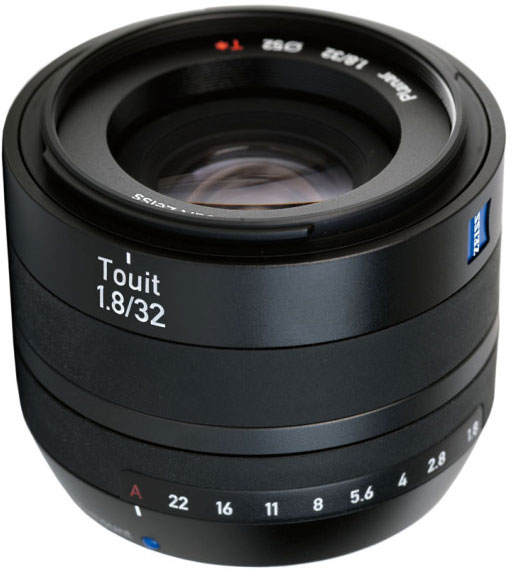
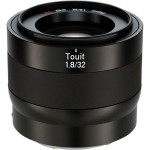
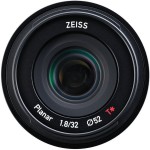
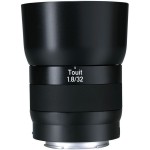
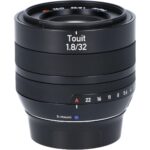
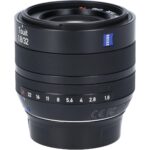
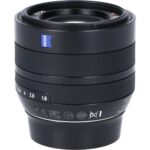
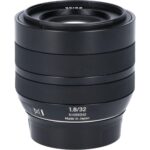

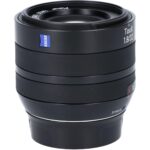
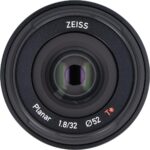
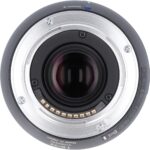


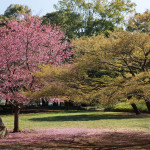












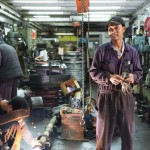



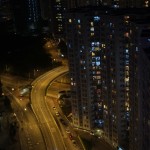
















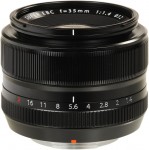
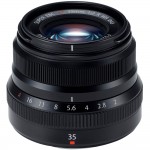
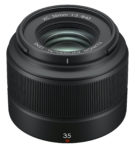

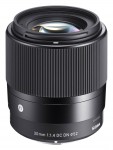
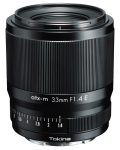
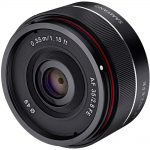

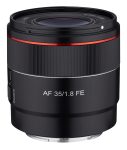

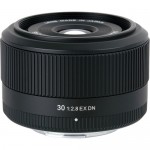
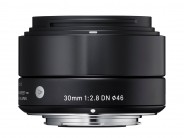

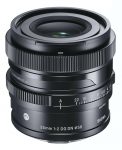

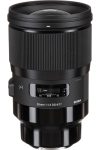
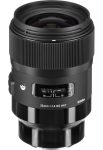
![Sony E 35mm F/1.8 OSS [SEL35F18]](https://lens-db.com/wp-content/uploads/2012/09/sony-e-35-18-01-140x150.jpg)
![Sony FE Carl Zeiss Sonnar T* 35mm F/2.8 ZA [SEL35F28Z]](https://lens-db.com/wp-content/uploads/2013/10/SEL35F28Z-112x150.jpg)
![Sony FE 28mm F/2 [SEL28F20]](https://lens-db.com/wp-content/uploads/2015/03/1126139-150x150.jpg)
![Sony FE ZEISS Distagon T* 35mm F/1.4 ZA [SEL35F14Z]](https://lens-db.com/wp-content/uploads/2015/03/1126137-150x150.jpg)
![Sony FE 35mm F/1.8 [SEL35F18F]](https://lens-db.com/wp-content/uploads/2019/07/1562681203000_1492866-150x150.jpg)
![Sony FE 35mm F/1.4 GM [SEL35F14GM]](https://lens-db.com/wp-content/uploads/2021/01/1610533223_1613424-150x150.jpg)
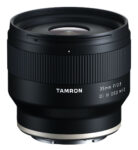
Max measurements are incorrect based on the noted PDF.
Length (without lens caps): E: 60 mm, X: 58 mm (not 72, 76)
Diameter of focusing ring: E, X: 65 mm (not 75)
The measurements found here include the lens cap and lens shade. The info for max diameter and length states measurements exclude case, pouch, caps, and detachable accessories.
The diagonal angle of view also appears to be incorrect based on the PDF (48° for both).
I have the x-mount in hand to confirm the measurements found in the PDF.
Yes, you right, Anthony. I took wrong numbers from that PDF. Fixed, thank you.
As for the angle of view, we never take it from manufacturer’s literature: our website calculates it automatically according to the formula. Moreover, our calculations more accurately take into account the actual crop factor. That’s why we give different values for Fujifilm X and Sony E cameras (their crop factors slightly differ), while ZEISS gives only one value (48 degrees) for both systems.